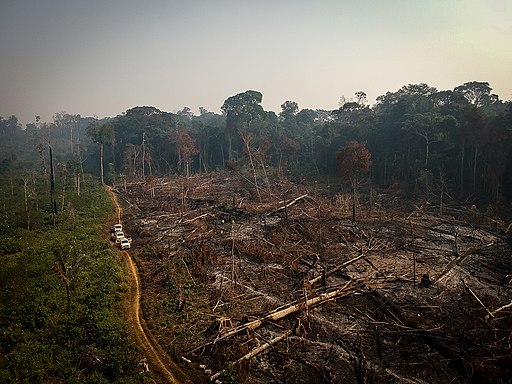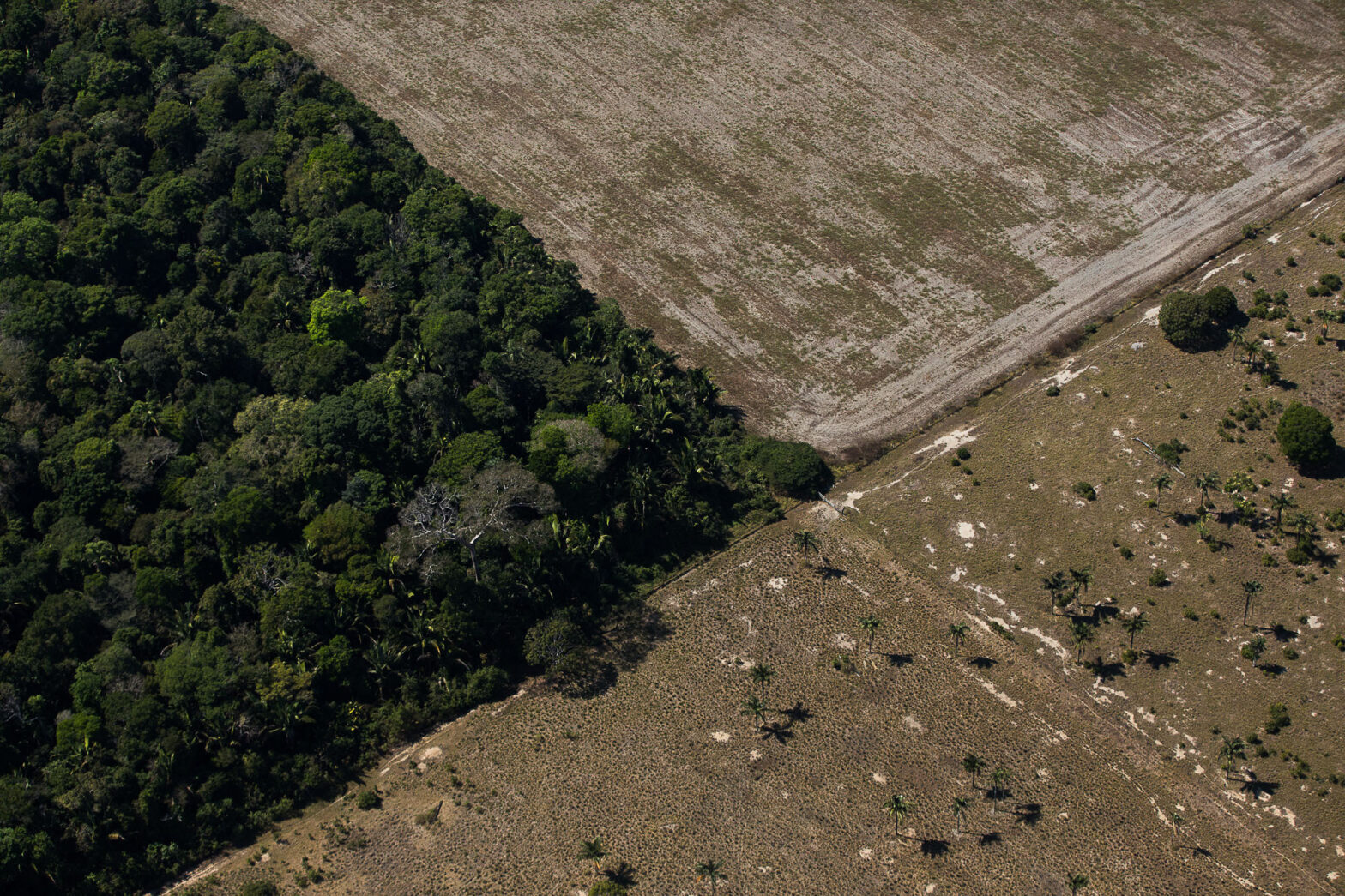A survey shows that failures in the control systems make it difficult to identify the origin of wood extracted from the Amazon, which increases the chances of criminal exploitation. Improving data transparency is essential to legalize production chains.
An analysis by non-governmental organizations reveals that it is not possible to differentiate between authorized and illegal logging in five of the seven states that produce the most wood in the Amazon. The lack of transparency and the precariousness of information in public systems increase suspicions that exported and national products may have criminal origins.
The entities’ calculations included Acre, Amazonas, Amapá, Rondônia, Roraima, Mato Grosso e Pará, the states from which almost all the wood extracted in the region comes. Only the last two have their own mechanisms to control logging, and the others use the National System for Origin Control of Forest Products (Sinaflor): a System implemented by Ibama that controls the national origin and circulation of forest products such as wood and coal, [learn more +].
Created in 2014 to monitor the origin of wood, charcoal, and other forest products, Sinaflor sorely needs improvements. According to researcher Dalton Cardoso at the Amazon Institute of Man and Environment (Imazon), it does not have complete or reliable data. Without extensive and qualified information on forest management plans, it is not possible to assess the legality of logging in the Amazon, the main source of wood in the country.

“The precariousness of information at the state and federal levels increases the possibility of crimes in the wood production chain. The inconsistencies of information generate gaps so that illegal products are hidden and marketed together with legal ones”, he observed. Imazon is part of the Simex network, a group of entities that cross-references satellite images with information from public agencies on management plans to identify illegal logging. Legal logging generally takes place with more organization in the middle of the forest. Illicit logging degrades vegetation and usually precedes the total clearance of the forest.
According to Marco Lentini, project coordinator at the Institute for Forestry and Agricultural Management and Certification (Imaflora), frauds to ‘launder’ illegal wood basically occur with the approval of ‘inflated’ management plans, with quantities of trees above what actually exists in the exploitable area, or through manipulation of rates for the conversion of logs into sawn wood by timber industries – generally 35% of the logs become sawn wood, but this rate can be overestimated.
“This happens due to corruption or unsupervised human failures. The control models over forest products make it possible to ‘launder’ illegal wood easily, legitimizing the exploitation in national parks and other conservation units, indigenous lands, and quilombolas”, highlighted the forest engineer.
These regions lost 280 km2 to logging between August 2019 and July 2020. Among the most affected are the Campos Amazônicos (AM), Tenharim Marmelos (AM), Batelão (MT) and Aripuanã (MT) National Parks. The Baú Indigenous Land had the largest illegally logged area in protected lands in Pará, with 1.58km2 (158 ha) of timber illegally extracted.

The Simex report also points out that timber was extracted from 4,640 km2 of the seven Amazonian states evaluated in the period – an area three times larger than the city of São Paulo. 50.8% (236 thousand ha) of the total area affected by logging was in the state of Mato Grosso. Amazonas and Rondônia share the ranking of the three largest areas exploited by loggers in the region.
The study also revealed that having its own system to control forest management did not exempt Pará from suspicions in the extraction of native wood. An analysis by Imazon showed that 55% of the 50.2 thousand hectares explored in the state between August 2019 and July 2020 had no authorization. Timber removal was concentrated in the southeast of Pará, a strong target for illegal deforestation and infrastructure works, as shown by InfoAmazonia, and in properties enrolled in the Rural Environmental Registry (CAR), where the identity of those responsible is known by public agencies.
High domestic consumption

According to Imaflora, the approximately 10 million m3 of logs currently removed yearly from the Amazon would fill up 250 thousand trucks. Put in a straight line, they would cover about 5,500 kilometers – more than the 4,400 kilometers separating Brazil’s northern and southern tips.
Public data organized by Imaflora show that the domestic market is the biggest consumer of this wood. Less than 10% of Brazilian production is exported. The rest ends up in homes, industries, and construction works, especially in the Southeast and South regions and, increasingly, in the Amazon itself.
Between 1998 and 2018, the consumption of industrialized wood products jumped from 1.5 million m3 to 2.2 million m3 in the region. This increase piggybacked on growing middle-class purchasing power and construction work demands. However, markets continue to turn a blind eye to products with signs of illegality.
Timber companies are the spearhead of deforestation. Open roads with the sale of hardwoods take deforestation, cattle, and other activities to the heart of the forest. We have to stop this illegal logging frontier.
Marco Lentini, from Imaflora
“Concessions for certified management and production meet less than 10% of the national demand. Everything above that has a very gray legality. Most consumers do not demand products with certified origin, and the low level of exports does not encourage a broader regulation of wood production”, highlighted Lentini, from Imaflora.
Illegal wood is cheaper than its legal alternatives, as its production does not have management plans, labor fees, taxes, and other costs paid by authorized producers. According to Imazon researcher Dalton Cardoso, unfair competition makes the formal market unattractive and discourages those who want to comply with the law.
“It is not possible to say that this is a reality throughout the Amazon, but it demonstrates that the sustainable and legalized management of forests needs more and better public policies and that inspections should be much stricter on regional criminality”, he said.
In addition to creating a trail of environmental destruction, illegal logging and other forms of forest degradation are associated with violence against rural, indigenous, and traditional populations. According to an Infoamazonia report, aggression against people and populations with lives linked to the conservation of the Amazon has soared in the current government.
These problems are also common in other regions. A Global Witness report shows that logging was the economic sector that was connected with the most killings of activists and rural leaders, accounting for 23 cases – 10% of the total amount. In other words, deforestation is one of the main sources of violence against these individuals and peoples.
Towards a legal wood market
According to Imaflora, at least 180,000 km2 (18 million hectares) of federal and state public land could be used in controlled forestry in the Amazon. The wood produced in these areas would meet the entire national industrial demand. In other words, following environmental standards, logging can be a viable economic activity that does not condemn the forest to destruction.
“The timber industry advances through the Amazon, leaving behind depleted areas in search of yet more natural resources. Timber companies are the spearhead of deforestation. Open roads with the sale of hardwoods take deforestation, cattle, and other activities to the heart of the forest. We have to stop this illegal logging frontier”, highlighted Lentini, from Imaflora.
When contacted, Pará’s Department of Environment did not contest the Simex Network analysis but claimed in a note to have authorized and monitored the exploration of 340,000 hectares of forests with satellite images in 2019 and 2020. The inspection would also have been intensified and led to the seizure of more than 9,000 m3 of illegally logged wood, 299 chainsaws, 117 tractors, and other machines. “According to data from Deter, the state of Pará had a 12% reduction in deforestation in the period from August 2020 to July 2021 in relation to the same period in the previous year”, described the environmental agency. The secretariat also informed that “more than 65% of the forest areas in Pará are under the jurisdiction of the federal government”, indicating that they would not be under its responsibility. But, according to the Constitution, the protection of the environment is the responsibility of municipal, state, and federal institutions concurrently.
Asked about measures taken to reduce the illegality of logging, IBAMA and the Brazilian Forest Service did not respond to our requests for an interview until the date the report was published.
Reporting by InfoAmazonia for the PlenaMata project.





